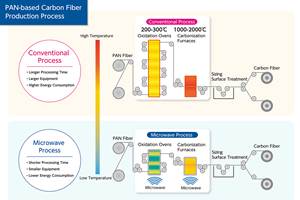Intuitive Machines debuts moon buggy for Artemis program
IM’s Moon RACER is one of three lunar terrain vehicle (LTV) designs being considered by NASA for future operations on the lunar surface.
Share
Fugro Australia’s Space Automation, AI and Robotics Control Complex (SpAARC) entered into agreement with Intuitive Machines to support its LTV phase 1 feasibility contract with NASA. Source | Fugro SpAARC
In line with NASA’s (Washington, D.C., U.S.) selection of Intuitive Machines, Lunar Outpost and Venturi Astrolab to advance lunar terrain vehicle (LTV) development in April 2024, Intuitive Machines (IM, Houston, Texas, U.S.) unveiled its first prototype at a public debut Nov. 7th at Space Centre Houston. Named the Moon RACER (“Reusable Autonomous Crewed Exploration Rover”), or the “moon buggy,” the pickup truck-sized mock-up highlights how an LTV will be used to travel around the lunar surface for NASA’s Artemis campaign.
Moon RACER is an 8.5-foot-tall, 12-foot-wide autonomous vehicle that is capable of towing a 108-foot-long trailer (33-meter), a key feature that will enable those on the moon to generally transport and operate equipment. According to the Houston Chronicle, “the vehicle can carry two astronauts wearing spacesuits and an additional 400 kilograms of cargo. The trailer can also be connected to the RACER to haul another 800 kilograms.” Alone, the LTV can reach speeds up to 9.3 miles per hour, is capable of climbing or descending 20-degree slopes and driving over obstacles up to 30 centimeters. It will also be equipped with a robot arm for autonomous and manual commanding.
IM has been working with AVL, Boeing, Michelin and Northrop Grumman in competition with teams led by Lunar Outpost and Astrolab. While materials have not been confirmed, it could be assumed that composite materials may play a role in the LTV’s design. For example, during an initial call for LTV solutions in 2021, General Motors and Lockheed Martin foresaw the importance of moving away from the previously aluminum rovers of the past to the use of titanium, carbon fiber weave and forged carbon fiber materials to achieve new durability and capability standards. Previous rover designs unrelated to the Artemis program — like the Iris nano-rover developed by Carnegie Mellon University — were also developed using composites.
For related content, read “Type V pressure vessel enables lunar lander”
Should NASA choose IM’s design over Lunar Outpost and Venturi Astrolab, the company will maintain ownership of its lunar rovers. The chosen program will deliver its rover to the lunar south pole and validate its performance and safety ahead of the Artemis V mission no earlier than the first quarter of 2030.
IM’s Trent Martin, senior vice president for space systems, told Aviation Week that “IM is tasked with not only building an LTV, but delivering it to the surface of the moon. So we built a lander that we call the Nova-D. We put the LTV on that lander. We launch it to the moon, and then we operate it on the surface of the moon for 10 years. We operate it when astronauts are driving it. But when they are not there, we will continue to operate the vehicle from here in Houston, from Australia, from the platforms that are on the moon.”
In February 2024, IM achieved a soft landing on the moon with NASA and commercial payloads using its Nova-C lander as one of 14 NASA Commercial Lunar Payload Services (CLPS) mission providers. The Nova-D lander is planned for 2025.
Related Content
Microwave heating for more sustainable carbon fiber
Skeptics say it won’t work — Osaka-based Microwave Chemical Co. says it already has — and continues to advance its simulation-based technology to slash energy use and emissions in manufacturing.
Read MoreSyensqo becomes new Solvay specialty materials company
Syensqo represents what was Solvay Composite Materials, focused on delivering disruptive material technologies and supporting growing customer needs.
Read MoreSinonus launches energy-storing carbon fiber
Swedish deep-tech startup Sinonus is launching an energy-storing composite material to produce efficient structural batteries, IoT devices, drones, computers, larger vehicles and airplanes.
Read MorePartners recycle A350 composite production waste into adjustable-length rods for MFFD
Herone, Spiral RTC, Teijin Carbon Europe and Collins Aerospace Almere recycle A350 thermoplastic composite clips/cleats waste into rods for the all-thermoplastic composite Multifunctional Fuselage Demonstrator’s crown.
Read MoreRead Next
On the radar: Reusable launch vehicles, hypersonics make space more accessible
CFRP has become key to targeting efforts in reusing components like rocket stages, as well as the development of reusable hypersonic testbeds and spaceplanes, for increasing space commercialization.
Read MoreNASA selects Blue Origin as second Artemis lunar lander provider
Blue Origin joins SpaceX in design, development, testing and verification of its lander concept to enable recurring astronaut expedients to the moon per the NASA Artemis program.
Read MoreDeveloping bonded composite repair for ships, offshore units
Bureau Veritas and industry partners issue guidelines and pave the way for certification via StrengthBond Offshore project.
Read More















